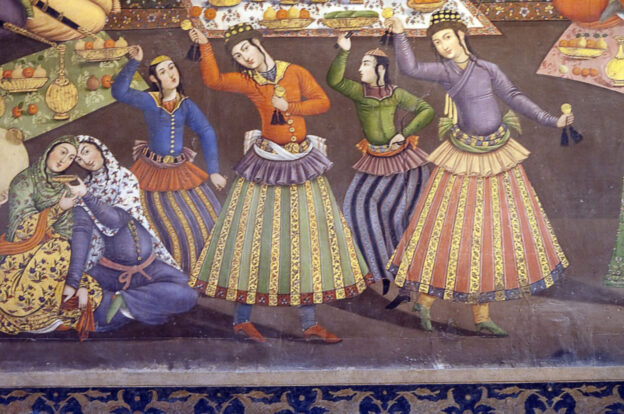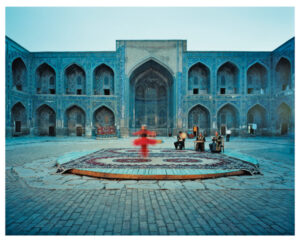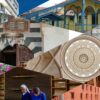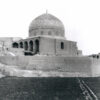Happy International Dance Day! In 1982 the Dance Committee of the International Theatre Institute (ITI) decided to celebrate April 29, the anniversary of the pioneering French dancer and choreographer Jean-Georges Noverre (1727-1810) as a day
“to celebrate dance, revel in the universality of this art form, cross all political, cultural and ethnic barriers, and bring people together with a common language – dance.” (International Dance Day – International Theatre Institute ITI. Accessed April 28, 2021. https://www.international-dance-day.org/internationaldanceday.html.)
In this post, we highlight some of the material in the collections of AKDC@MIT and Archnet.org that celebrate dance, not only as an art, but as a form of religious, cultural and social expression. The image at the top of this post shows musicians and a dancer twirling so fast she is captured as a blur. This photograph was taken in the courtyard of the 17th c. Shir Dar Madrasa in Samarkand, Uzbekistan, and is part of the Archnet collection of photographs taken in Central Asia by Sebastian Schutyser for the Aga Khan Music Programme.

Top L-R: B&W photograph of a male and female dancer performing “Tissint dance at the Badia Palace in Marrakech, B&W early 20th-century postcard of “Bedouin” musicians in Cairo; Below: Capture from a video of exercises at the Zurkhanah-i Nirumand in Kashan.
Three other collections relevant to International Dance Day are the Music of Morocco collection, including music and photographs of dance performances from Morocco in 1959 and the early 1970s; and the video and photographs from the Iranian Zurkhaneh in which music, exercise and dance meet in ritualistic performances; and even the postcards of a Burlesque performer in Cairo, 1908-1912.
Of course, these three collections are not the only relevant resources. You will also find site entries for various schools of dance and performing arts venues, a syllabus for teaching about Art, Architecture and Tradition in West Africa, including dance, and images of dance performances from throughout the history of Muslim societies.
In the Aga Khan Visual Archive you will find plans, elevations and sectional drawing for the High Institute for Popular Arts in Aswan, Egypt, designed by the great Egyptian architect Hassan Fathy. On Archnet you can also find Hassan Fathy’s report to the Egyptian Minister Dr. Tharwat Okasha, on the importance of the promotion of folk and traditional dancing in Egyptian culture.
In the AKVA, you will also find an image of dancers at a Macedonian wedding; artwork depicting Balinese dancers from the collection of the Museum Puri Lukisan in Ubud, Bali, Indonesia; and a number of performing arts schools and centers, such as the Alhamra Arts Council in Lahore, Pakistan (Recipient of the Aga Khan Award for Architecture in 1998); the Alisher Navoi Opera and Ballet Theatre in Tashkent, Uzbekistan; the State Opera and Ballet Theater in Bishkek, Kyrgyzstan; the Shri Ram Centre for the Performing Arts in New Delhi, India; and the Indonesia College of the Arts in Denpasar, Bali, Indonesia.
There is certainly much more to explore than we have highlighted here, so have at it. What do you find most fascinating? What would you like to see that we don’t have? Remember that we always welcome contributions of scholarship and media, so we’d be happy to hear from you.
In the meantime, even if you are home in pandemic lockdown, why not celebrated International Dance Day by moving your feet to the rhythm of your favorite music!
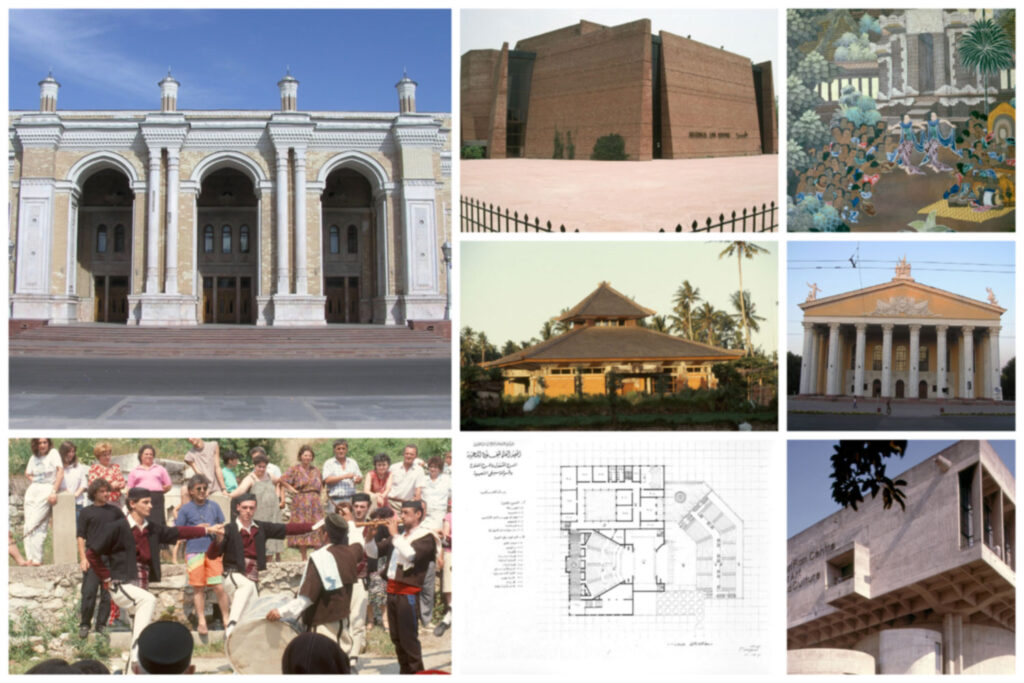
From the AKVA: High Institute for Popular Arts-Aswan, Egypt; dancers at a Macedonian wedding; artwork depicting Balinese dancers in a temple; the Alhamra Arts Council in Lahore, Pakistan; the Alisher Navoi Opera and Ballet Theatre in Tashkent, Uzbekistan; the State Opera and Ballet Theater in Bishkek, Kyrgyzstan; the Shri Ram Centre for the Performing Arts in New Delhi, India; and the Indonesia College of the Arts in Denpasar, Bali, Indonesia.
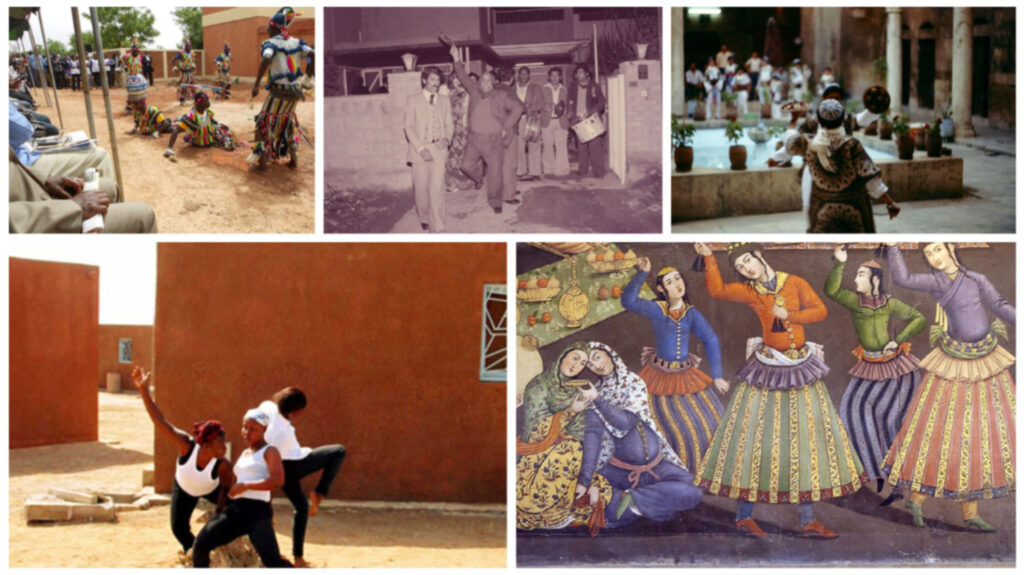
From Archnet.org: Traditional dance performance in Bazoulé, Burkina Faso; Wedding festivities photographed in 1978 by Rifat Chadirji; A Syrian Folk Dance in the courtyard of Bimaristan Arghun al-Kamili in Aleppo, Syria (1987); Students rehearsing outside dorms of the International Centre of Contemporary African Dance in Toubab Dialaw, Senegal; A wall painting at Chihil Sutun in Isfahan, Iran, depicting dancers in a celebration.
